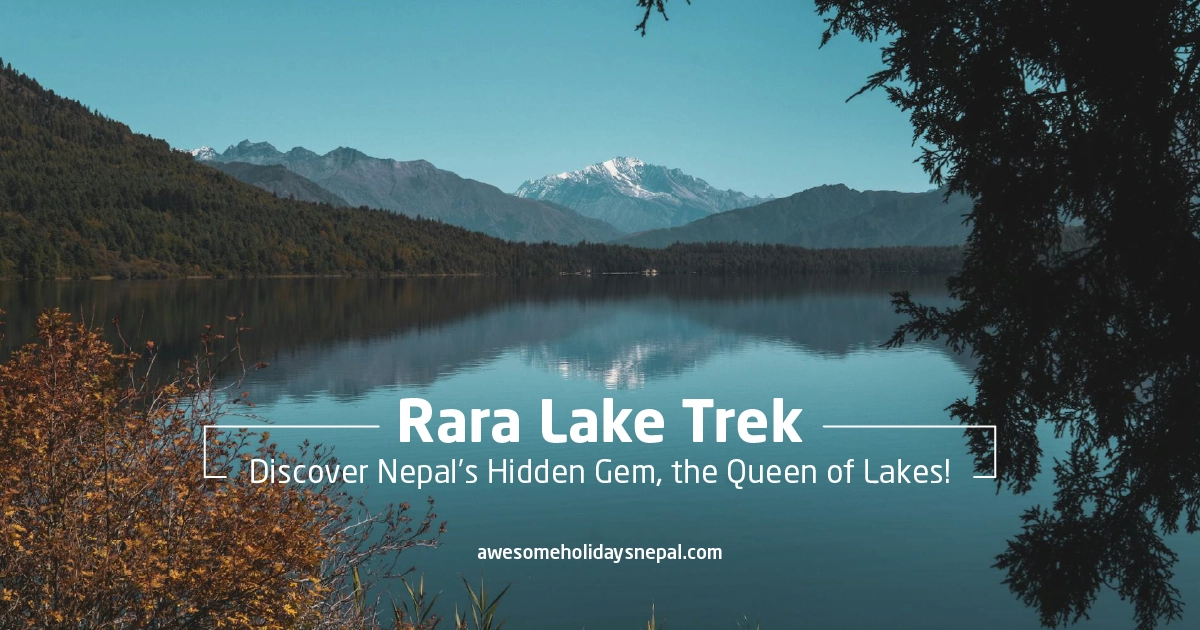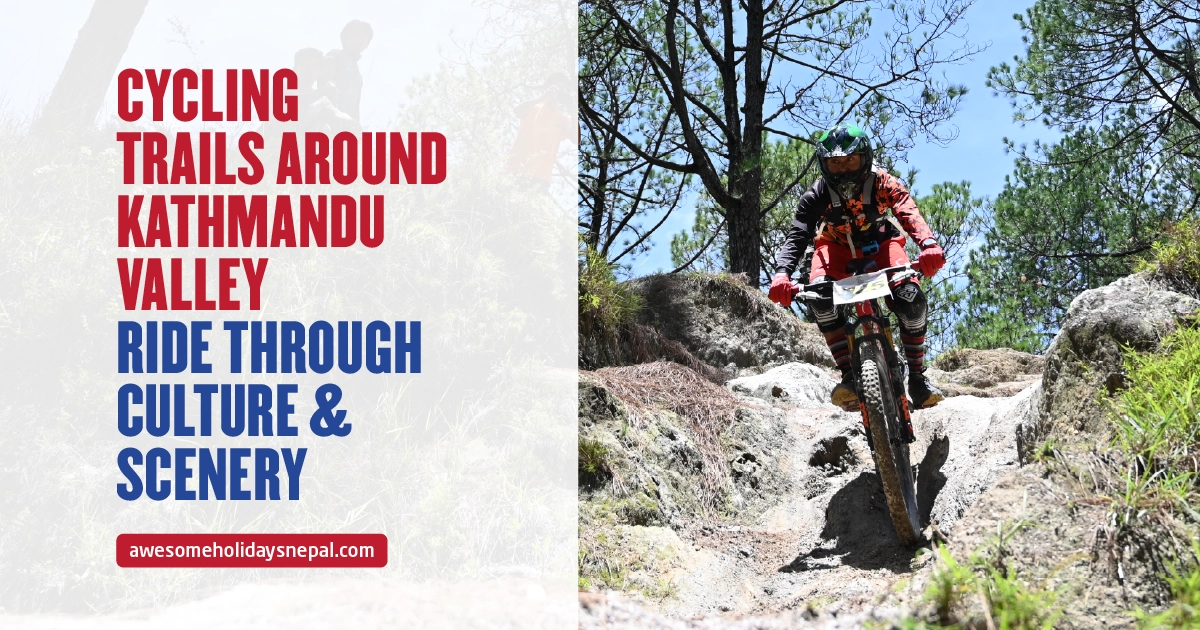Climbing Manaslu: The First Historic Journey
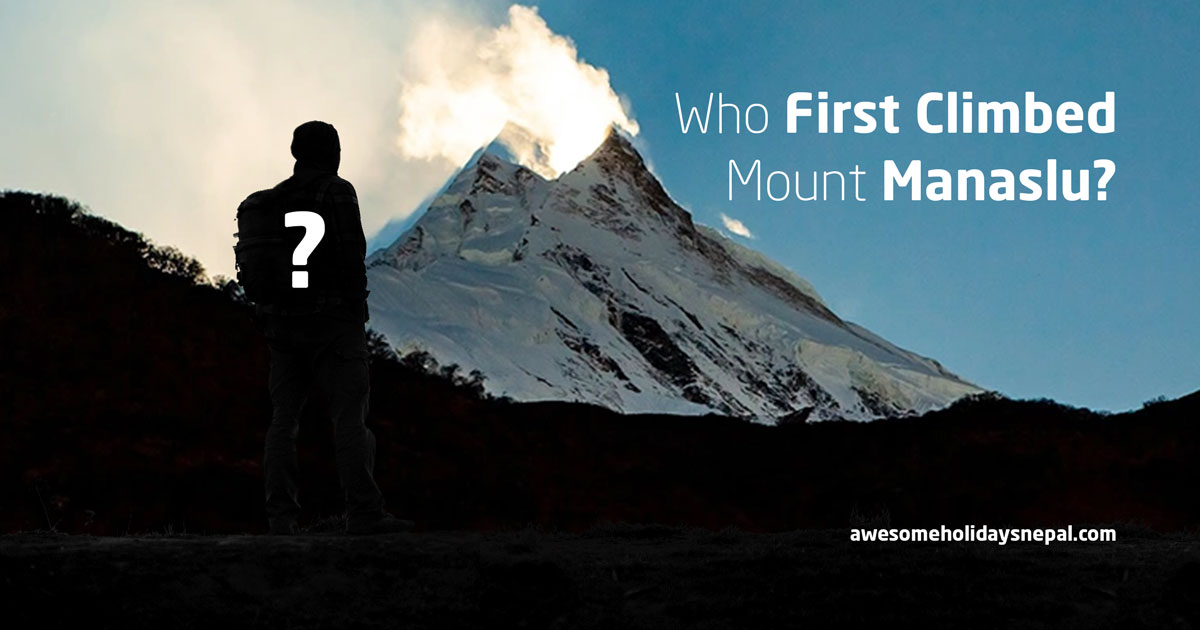
Climbing Manaslu, the eighth-highest mountain in the world, is a breathtaking and awe-inspiring adventure that attracts mountaineers from all over the world. Ever since its discovery, climbing Manaslu has become a pioneer in Nepal’s trekking industry. It is famous for its authentic natural scenery and solitude from the rest of the world.
The popular Manaslu trekking route is 177 kilometers long and borders the Manaslu massif over the pass down to Annapurna and Himchuli. Whether you’re a seasoned mountaineer or an admirer of Nepal’s mighty mountains, Climbing Manaslu represents a dream for many.
Trekking in this region was not allowed until 1991. The area is also protected by the Manaslu Conservation. 3,317 summiteers have climbed the Manaslu, and less than one-third of them (840+) did so without bottled oxygen, as of the end of 2023. Climbing Manaslu takes you on a journey through some of Nepal’s most remote and scenic landscapes.
But before we drill down to who first committed this ascent, let’s know Mount Manaslu.
Manaslu – The Mountain of Spirits
Mount Manaslu, also known as Kutang, is the eighth-highest mountain in the world. It is 8,163 m above sea level. Lying in west-central Nepal, it is part of the Mansiri Himalayan Range. The word Manaslu came from the Sanskrit word Manasa, meaning “intellect” or “soul.” Hence, Mount Manaslu means “mountain of the spirit.” This sacred mountain is revered not only for its breathtaking beauty but also for the spiritual significance it holds in local mythology.
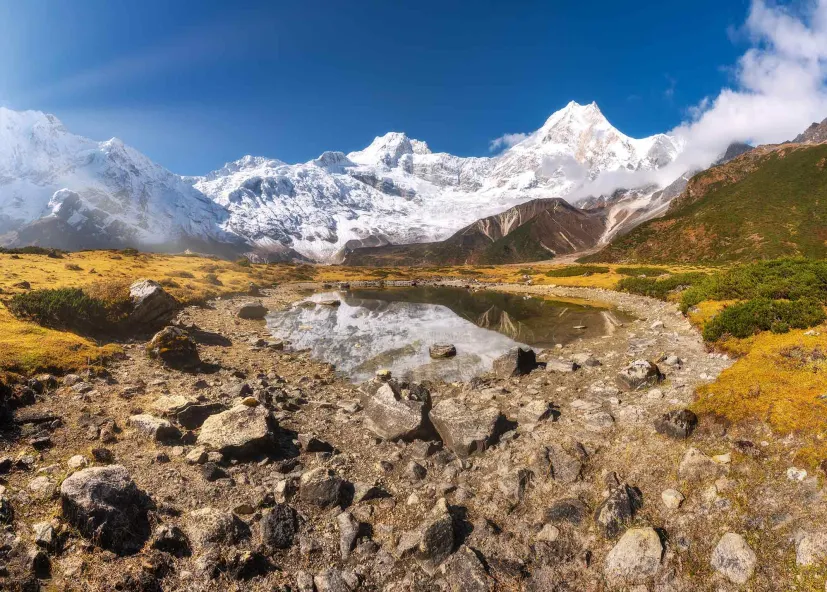
Early Recognition: The First Sightings (1950)
The first recorded sighting, not the climbing Manaslu, was done in 1950 by the Western team of explorers led by Bill Tilman, a seasoned British mountaineer and explorer. The team visited the site in search of Annapurna. Accompanied by fellow mountaineer J.O.M. Roberts, Tilman ventured into the Manaslu region during this journey. Identifying this mountain, they did their preliminary study and noted its climbing potential.
Tilman and Roberts carefully studied the terrain and possible routes that might allow future ascents. They identified the Budi Gandaki Valley as a natural corridor leading to the base of the mountain.
They trekked for six days, starting from Kathmandu Valley, where they established their base camp at Manang. Exploring the region of the Annapurna massif, from the upper section of Dudh Khola, hiked to the Larkya La Col, they could see Manaslu from Bumtang.
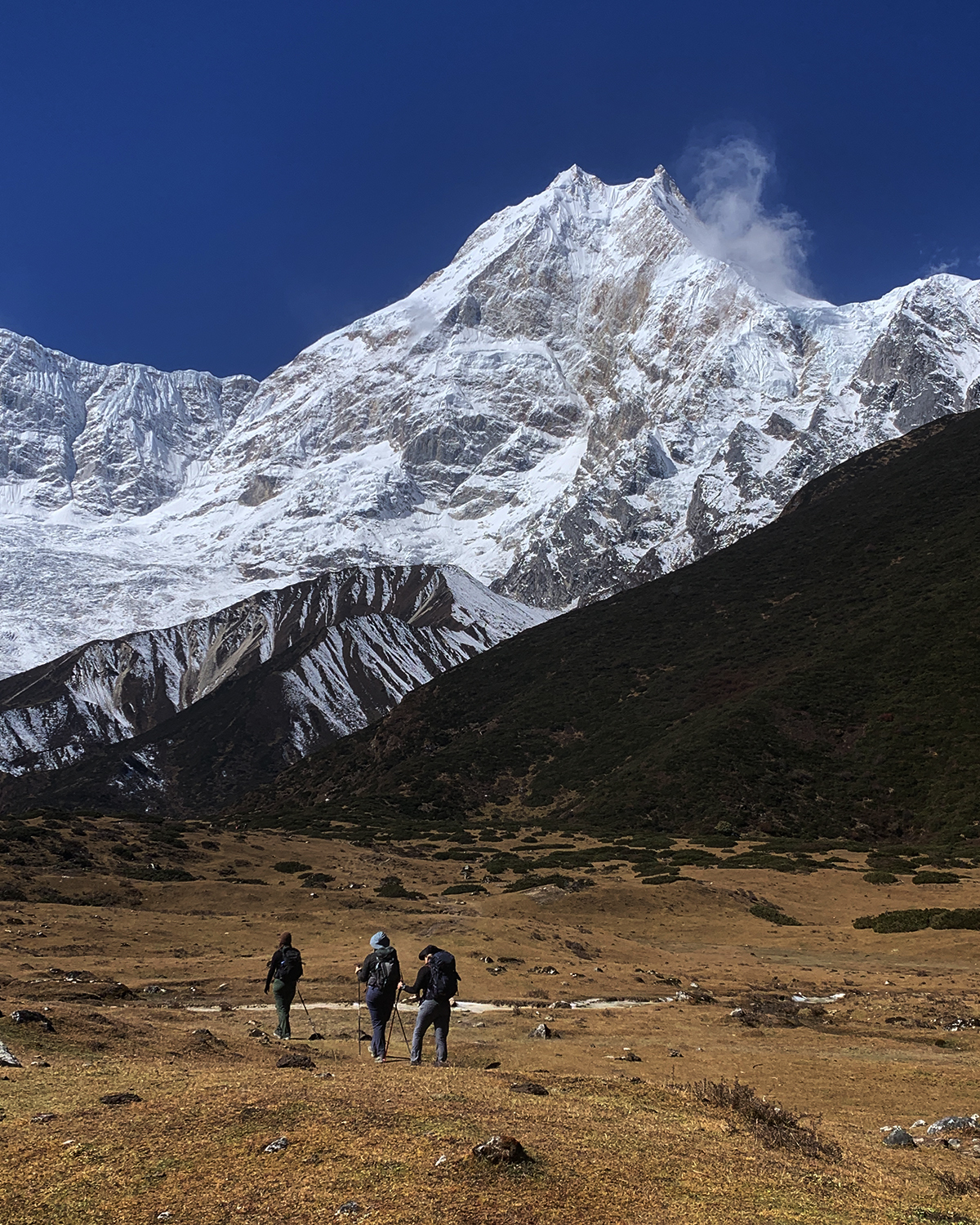
Their findings, though not adequate, helped to shape the course of early climbing Manaslu and other mountains of the great Himalayas.
Different Attempts of Ascending Mount Manaslu
The First Attempt of Climbing Manaslu: The 1953 Japanese Expedition
Inspired by the growing interest in Himalayan mountaineering, a Japanese expedition set out in 1953 in an attempt to conquer Manaslu. The team followed the Budi Gandaki River and returned after reaching an altitude of 7,750 meters.
The Second Attempt of Climbing Manaslu: The 1954 Expedition
In 1954, another Japanese team attempted to climb Manaslu but could not do so as the local inhabitants of Samagaun resisted them. The villagers worship the mountain as a deity and believe that the spirits of the mountain are annoyed due to previous attempts of climbing Manaslu that brought natural disasters and misfortunes to the region. Hence, the team had to redirect their expedition toward Ganesh Himal.
The Successful Story of Climbing Manaslu: 1956 Japanese Expedition
In 1956, a team led by veteran climber Yuko Maki took advanced gear and developed an oxygen generator technology for climbing Manalu. The team was under the leadership of Yuko Maki, Former President of the Japanese Alpine Club. The team had Gyalzen Xorbu as Sirdar, including 20 other Sherpas. On reaching Samagaun, the team was again stopped by local sherpas but was managed by a courtesy of the Nepal Government.
They established Camp II on April 13th on the Naike Col at 18,350 ft., and on April 25th, they marched for Advanced Base above the icefall at 21,500 ft.
The weather at Manaslu was in favor of the team, and everything was going smoothly. Camp IV had been set up just below the North Col. by April 29. On this day, a council meeting was held at Camp II, led by Mr. Maki, to finalize the details of the summit assault. This event marked a crucial moment in decision-making regarding the climbing Manalu route, as the team debated between the 1953 route via the North Col and an alternative route directly up the steep snow wall. The team also worked to secure the route beyond 7,500 meters.
They faced technical ice walls, strong winds, and deep snow, which made climbing extremely difficult. Yet, they had to suffer challenges and Setbacks. The heavy snow and strong winds slowed the team’s movement. The climbers had to adjust their strategy and wait for the right weather window before pushing for the summit.
The team prepared for the final route and continued fixing ropes from April 30 to May 3, establishing the safest path toward the summit.
By then, Camp V and Camp VI were established above 7,000 meters, marking crucial staging points for the summit attempt. They also could transport Supplies, including oxygen cylinders and essential gear, to the highest camps. Japanese climbers Toshio Imanishi and Sherpa Gyalzen Norbu were chosen for the first summit attempt. They rested and acclimatized at Camp VI, preparing to make the final push.
On May 4 – 5, they established the final high-altitude camp (Camp VII) at around 7,850 meters. The climbers faced extreme cold and exhaustion while preparing for the final ascent and waited for weather forecasts, for a clear summit window.
May 6 and 7 were the days for Acclimatization and Rest. Imanishi and Gyalzen Norbu rested and conserved energy at Camp VII. They checked and adjusted their oxygen equipment, ensuring it would last for the final climb. On the 8th, Imanishi and Gyalzen Norbu left Camp VII early in the morning, heading towards the summit. The support team remained on standby at lower camps, ready to assist if needed.
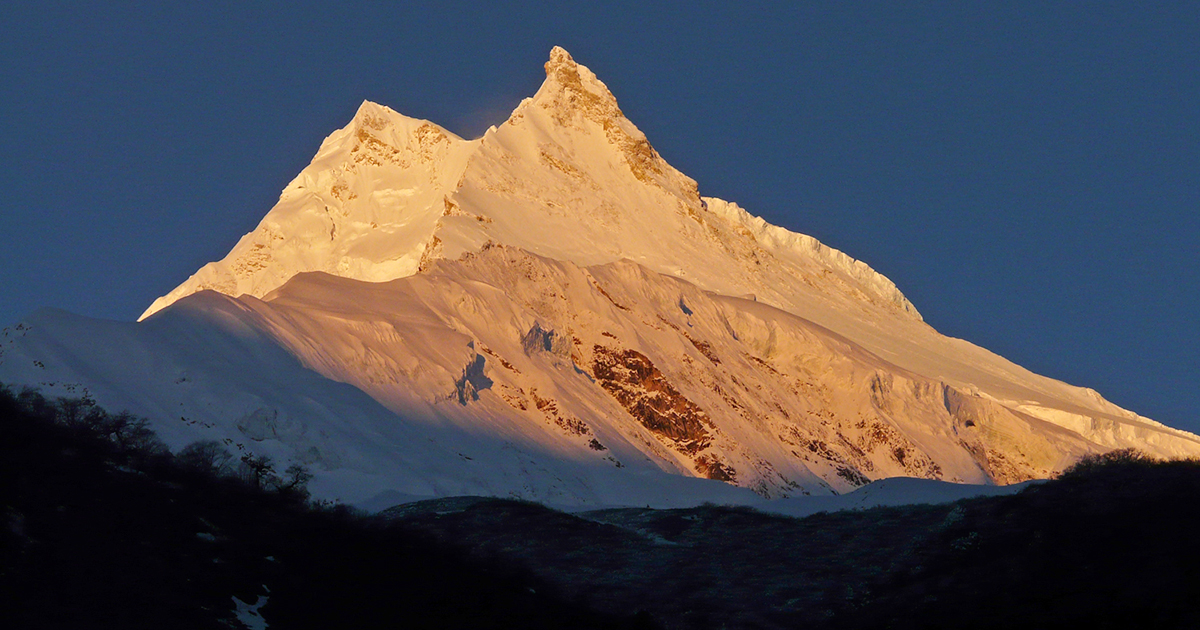
The next day, at 12:30 PM, Toshio Imanishi and Gyalzen Norbu Sherpa reached the 8,163-meter summit of Manaslu, making history as the first climbers to conquer the peak. May 9, 1956: First Successful Summit of Manaslu. The first successful climb of Manaslu marked a significant milestone in Himalayan mountaineering history.
They spent a brief time at the summit, taking photographs and offering prayers. After their successful climb, they carefully descended back to the lower camps, reuniting with the team.
Two days later, they were followed by another pair, Kiichiro Kato and Minoru Higeta, as the successful Second summit on the peak of Manaslu.
The First Nepali Climber & Later Expeditions
While the Japanese teams had pioneered Manaslu’s ascent, it wasn’t until April 22, 1973, that the first Nepali national, Urkien Tshering Sherpa, summited the peak. Over the years, Manaslu has gained popularity among climbers worldwide, with an increasing number of successful summits recorded annually. Today, it remains a favored choice for mountaineers seeking to tackle an 8,000-meter peak before attempting Everest.
Manaslu’s Legacy in Mountaineering
With its rich history, climbing Manaslu has become a dream for mountaineers seeking to conquer the heights of the Himalayas. Manaslu’s legacy in mountaineering is both historic and enduring.
From its initial sightings to the cultural challenges and ultimate triumph in 1956, the mountain has stood as a testament to human perseverance and exploration. Today, Manaslu continues to attract adventurers from around the globe, offering a formidable yet rewarding challenge in the heart of the Himalayas.
As mountaineering technology advances, the spirit of Manaslu remains unchanged—a beacon of adventure, intellect, and resilience.
FAQs
Expand AllWhat is the eighth highest peak in the world?
Mount Manaslu is the 8th highest mountain in the world with an height of 8163m from the sea level.
Can we combine the Tsum Valley trek with the Manaslu Circuit?
Yes, you can combine Tsum Valley trek with the Manaslu Circuit with an addition of several days to your journey. The extra days in Tsum Valley will provide cultural experience, and scenic highlights.
What are the permits required for Manaslu Circuit Trek?
Permits like the special Restricted Area Permit (RAP), Manaslu Conservation Area Project (MCAP), and Annapurna Conservation Area Permit (ACAP) are required for Manaslu Circuit Trek. If extended, you need Tsum Valley Permit to travel through Tsum Valley.
When was the first time Mt. Manaslu climbed?
Mount Manaslu was climbed for the first time on May 9, 1956, A.D. by Toshio Imanishi and Gyalzen Norbu.
Do you need oxygen to climb Mt. Manaslu?
Yes, oxygen is a must if you are climbing to the Manaslu region. However, it is not compulsory as some experienced climbers have climbed the summit without oxygen.
Who is the youngest person to climb Mount Manaslu?
Mingma David Sherpa climbed Mount Manaslu at the age of 17 in 2012 AD.
Can I climb Manaslu without a guide?
As of recent regulations of Nepal, solo climbs are restricted, and climbers must join a registered expedition with a licensed guide for safety and compliance.
How long does the Manaslu expedition take?
The expedition usually takes around 35 to 45 days, including trekking to base camp, acclimatization, climbing rotations, and summit push.
Do I need prior climbing experience for Manaslu?
As you are climbing above 8000m, you need prior experience with high-altitude climbing experience. Climbers should be familiar with using fixed ropes, ice axes, crampons, and managing altitude sickness.
What is the starting and ending point of the Manaslu circuit trek?
Generally, the 13-day Manaslu Circuit Trek starts at Macha Khola and ends at Besisahar.
Related blog posts
Discover a choice of tourist destinations loved by most of our visitors. Whether you're on a jungle safari to spot rare animals or walking through a world heritage site, these well-planned itineraries cover the major highlights of Nepal.


